I often write about how morning light differs from daylight and evening light. But I have never shown clearly how light affects the subject in street photography.
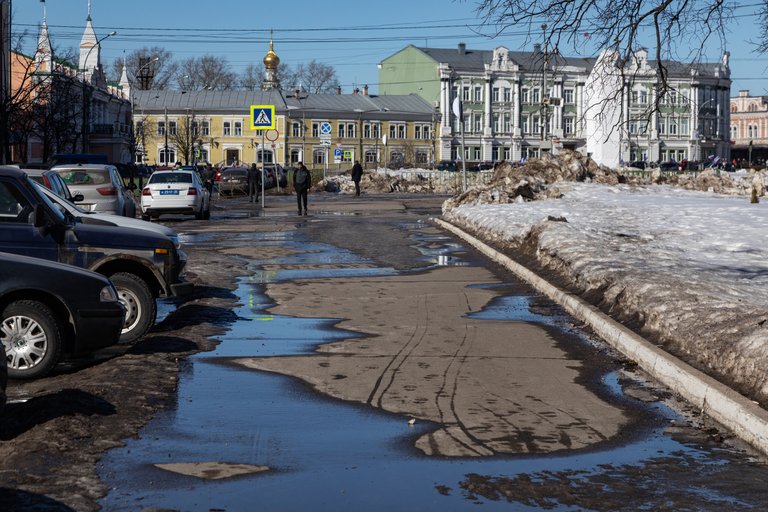
The first half of the pictures in this post were taken on a March afternoon.
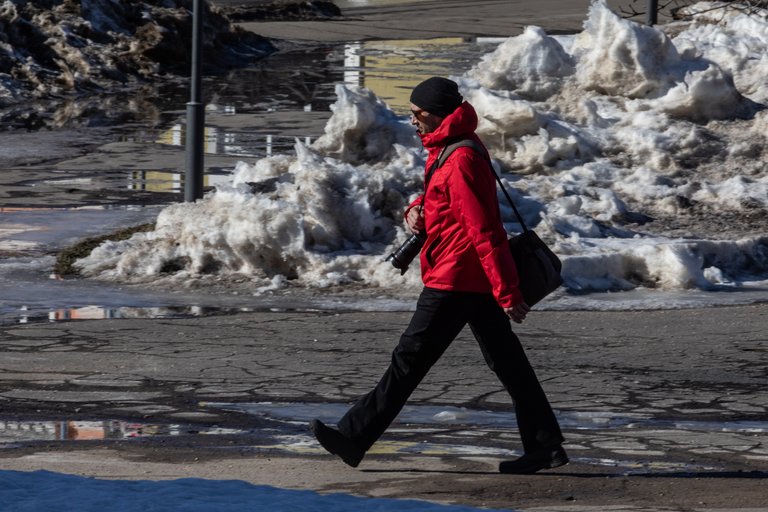
It is in the middle of the day that the maximum spotting appears.
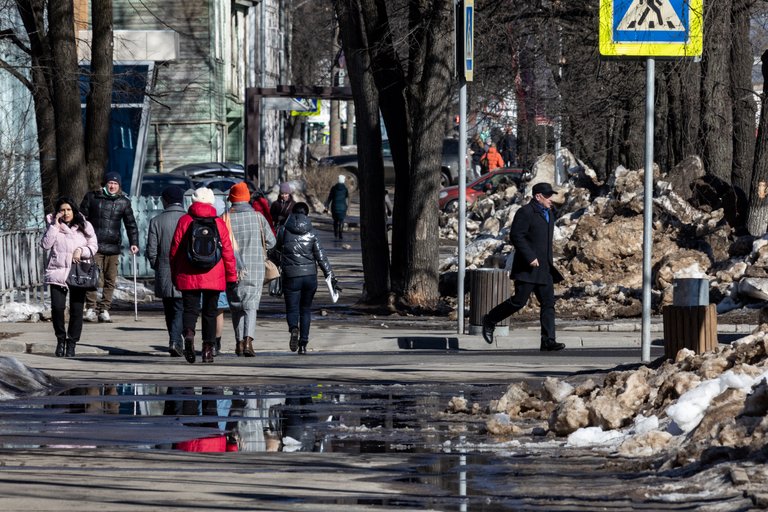
The sun's rays are already high and create, albeit deep, but short shadows.
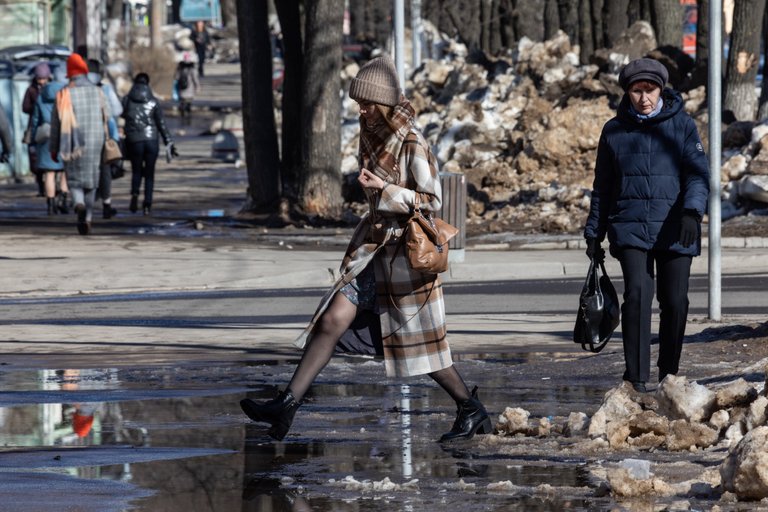
Spots are created due to the abundance of details and shadows on them from bare trees.
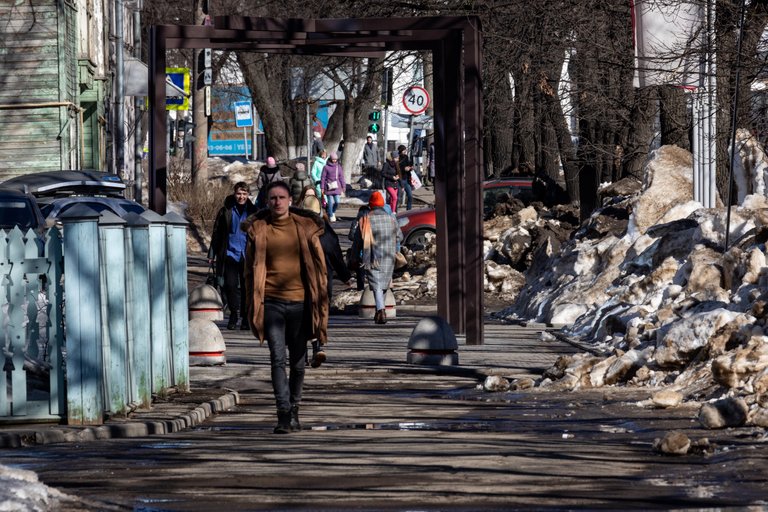
This is probably the most interesting thing that I managed to learn in street photography.
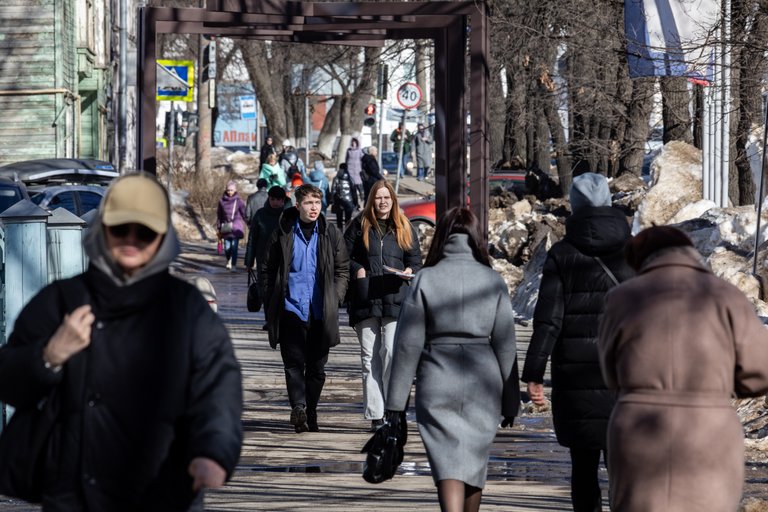
The snowdrift in the background looks ruffled because it was specially loosened by an excavator so that the snow melted faster.
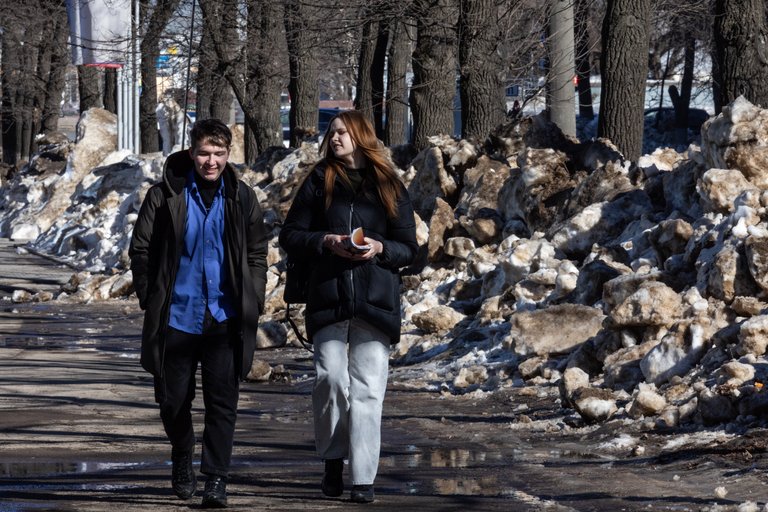
Evening light is immediately visible in the picture: it is dim, very pointy, and the shadows around occupy a large area.
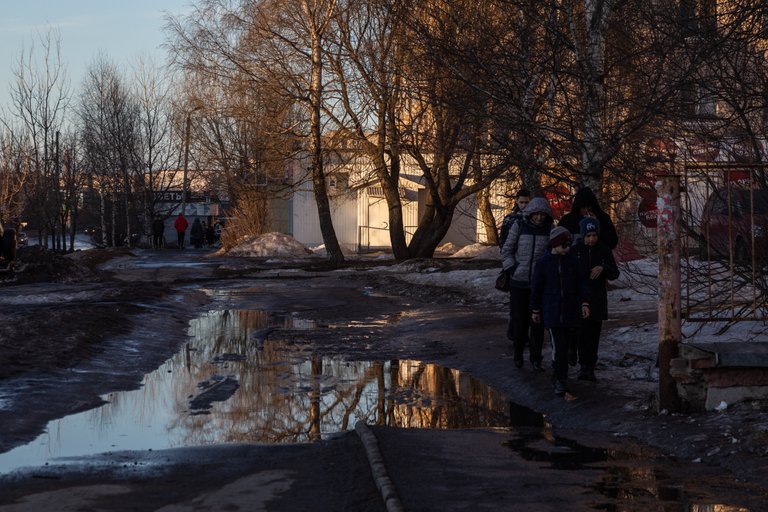
The light has a yellowish tint and does not hit the pavement, as the sun has hidden behind tall buildings.
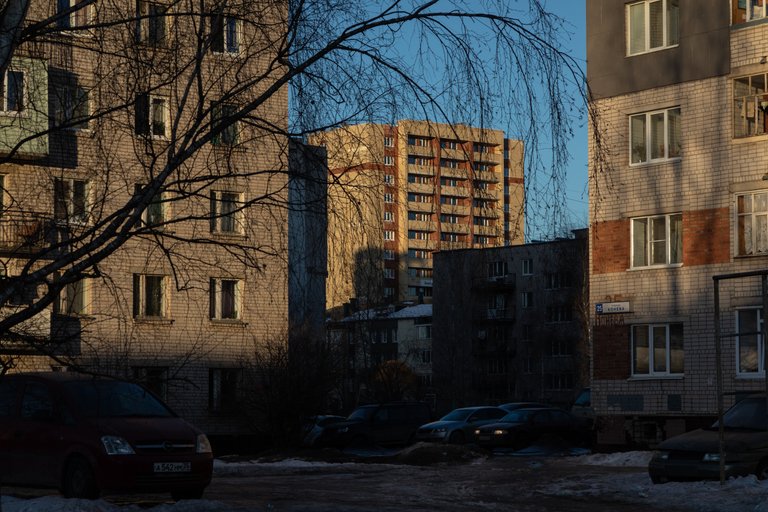
In this light, you can also look for the play of shadows and objects, but the spotting is already disappearing.
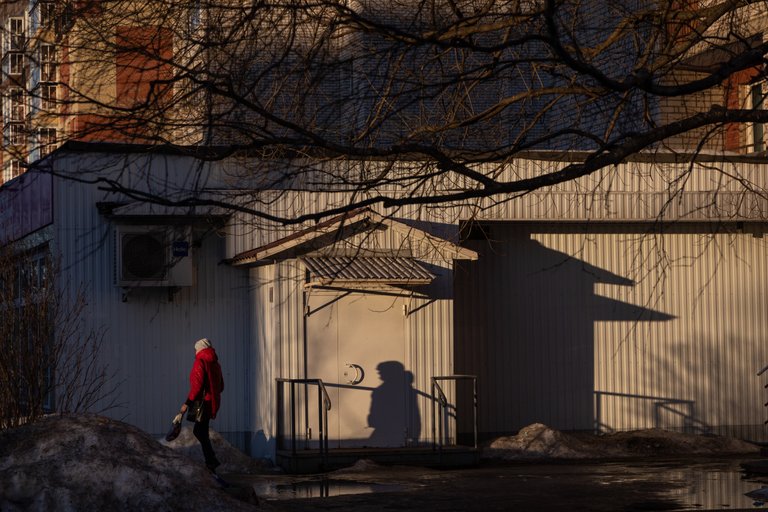
Evening light contributes to the creation of silhouettes.
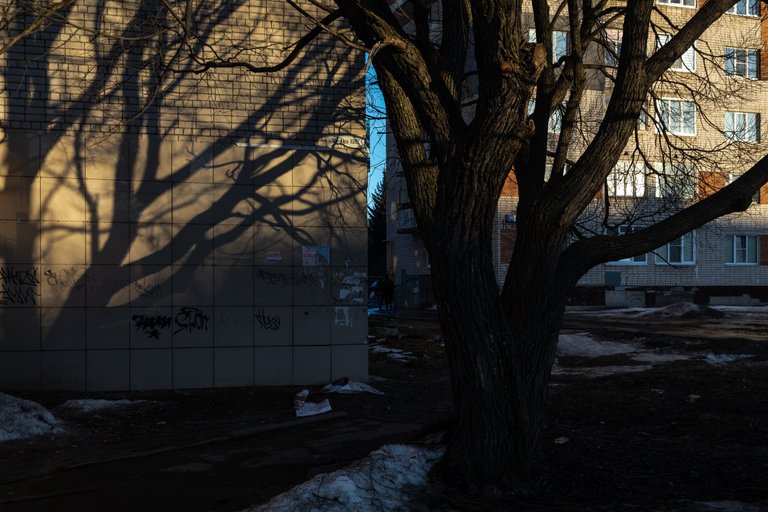
Sometimes you want to show the technical side of creating a snapshot. I study this kind of art from all possible sides, including from the side of metaphysics.